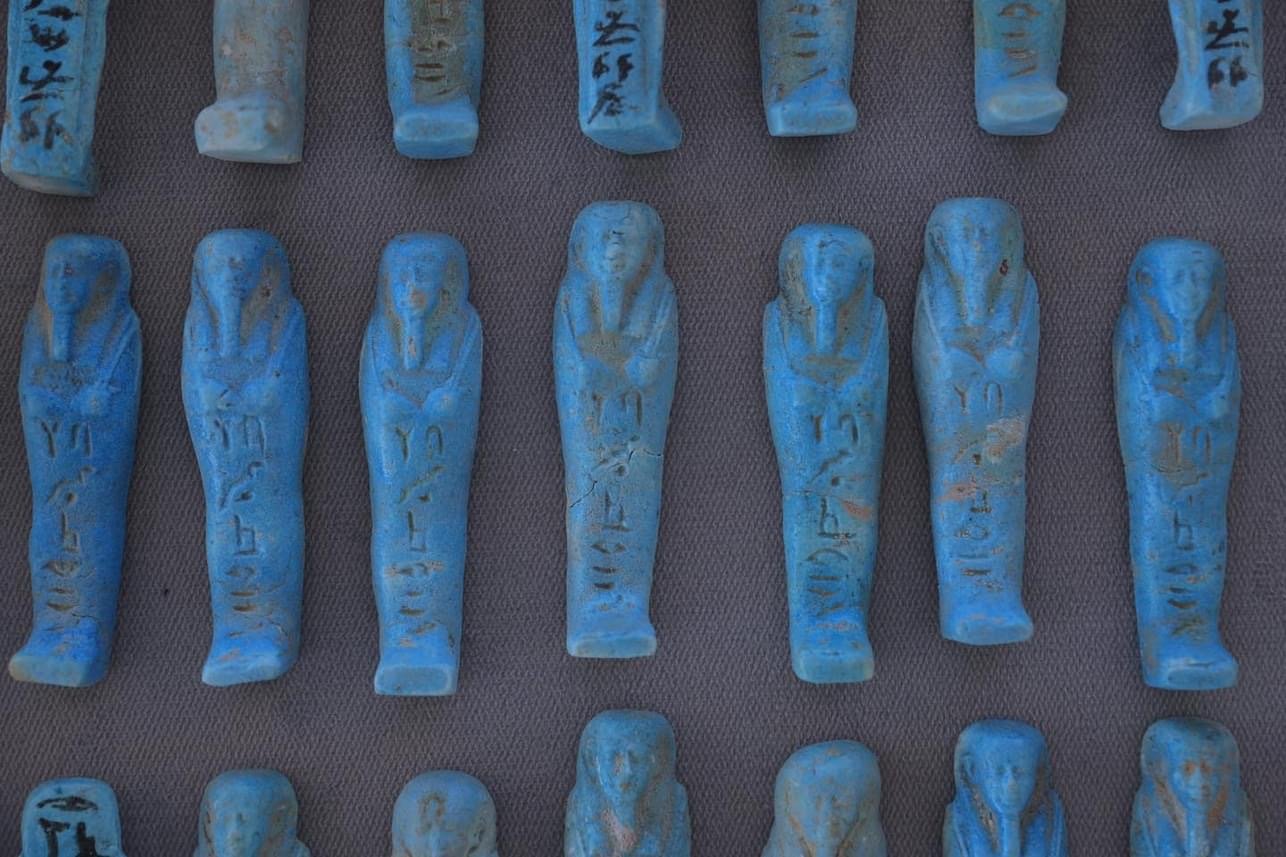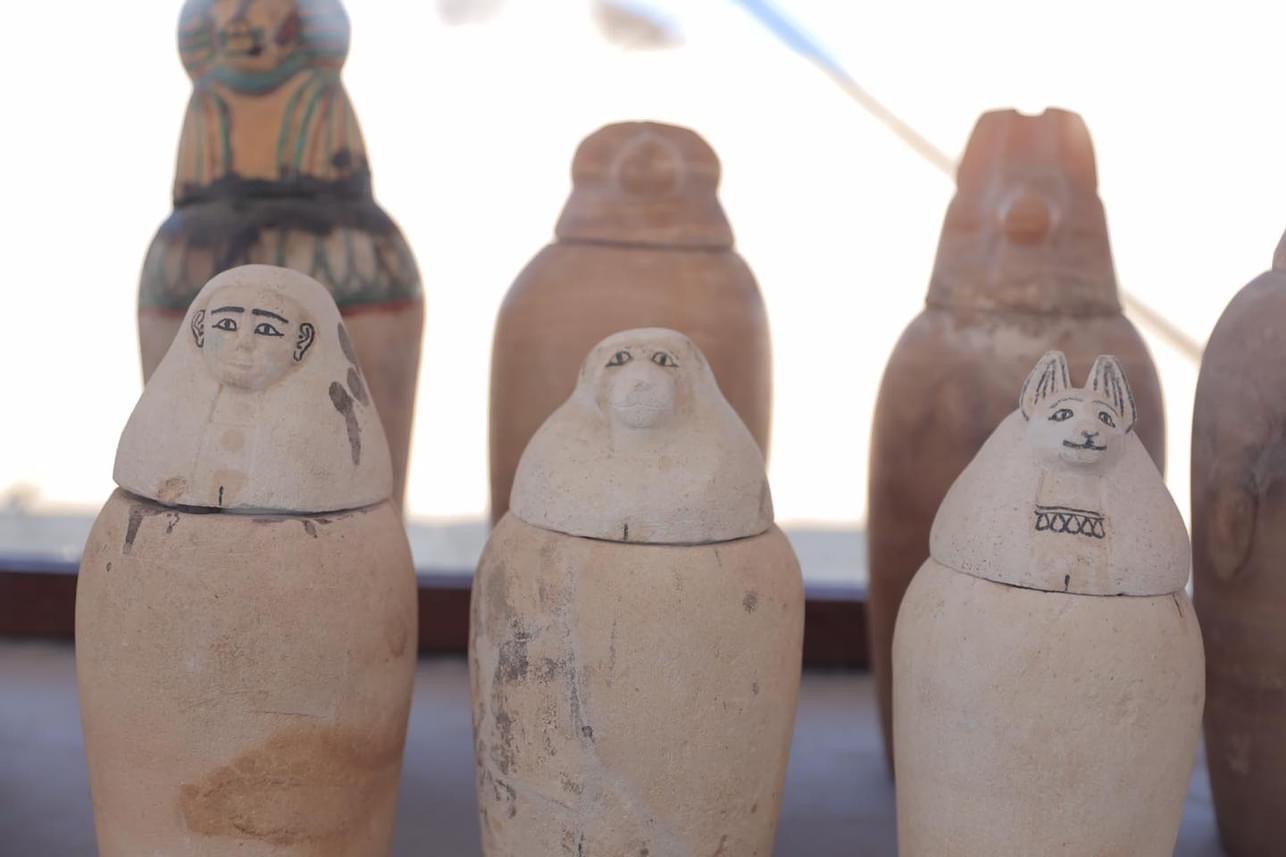





Image(s) credit: The Ministry of Tourism and Antiquities, Egypt.
NEWS: 3,400 year old cemetery from Egypt’s New Kingdom unearthed at Tuna el-Gebel in Minya
A cemetery, approximately 3,400 years old, has been unearthed in the Al-Ghuraifa area of Tuna el-Gebel, Minya. The discovery was made by a team of archaeologists led by Dr Mostafa Waziri, the secretary-general of the Supreme Council of Antiquities of Egypt. The cemetery dates from the Ancient Egyptian New Kingdom (16th - 11th century BC) and contains numerous stone and wood sarcophagi encasing mummified corpses. These sarcophagi are accompanied by a wealth of artefacts commemorating the funerary rites of the deceased. According to the experts that are studying the site’s contents, it is evident that this cemetery houses the dead of important and wealthy figures in their society such as senior officials and priests.
Among the hundreds of artefacts found at the site are amulets, ornaments, and canopic jars, as well as Ushabti statues made of pottery and wood that depict figures from Egyptian myth. A scroll was also found containing a sheet of papyrus approximately 13-15 metres long. The papyrus has remained in remarkable condition to the extent that the text is legible. The writing on the papyrus refers to the Book of the Dead, a magical collection of texts thought to assist the dead on their journey through the Duat (underworld) and into the afterlife. This is the first complete papyrus found in the Al-Ghuraifa area.
In a press conference organised by the Ministry of Tourism and Antiquities, Dr Waziri explained that this is the first time that a New Kingdom cemetery has been found in the fifteenth nome of Upper Egypt, as cemeteries of the Old Kingdom, the First Intermediate Period, and the Middle Kingdom have been found previously.
The Egyptian New Kingdom spanned 5 centuries and was a prosperous period for the ancient Egyptian empire. It saw the rise of three pharaonic dynasties (categorised as the 18th, 19th, and 20th dynasties) each containing some of, what are thought to be, the greatest rulers Egypt had known. Lost land was reconquered and new land conquered as the empire reached its largest ever extent in the 13th century BC, stretching from Syria in the north to Nubia in the south and from the Red Sea in the east to the Libyan desert in the west. Tuna el-Gebel was the necropolis of the city of Khemenu which later became known as Hermopolis as Egypt became more Hellenised (the Greeks associated the Egyptian god Thoth with their own god Hermes). The necropolis remained in use after the New Kingdom period with archaeological evidence of the area showing it was used by the Romans well over a thousand years later.
17/10/2023

